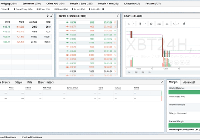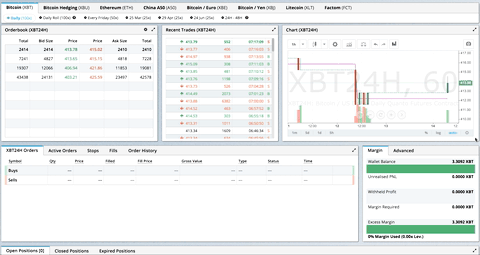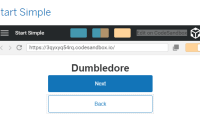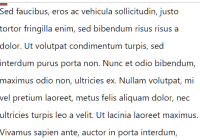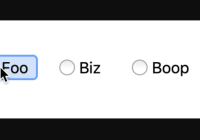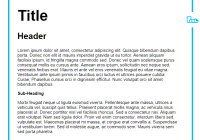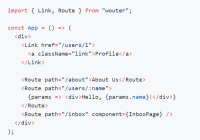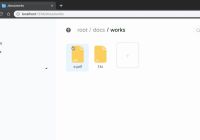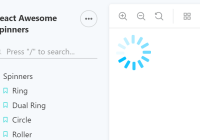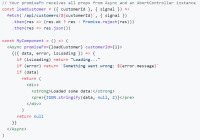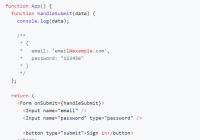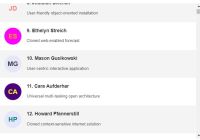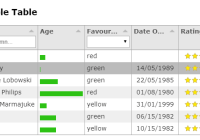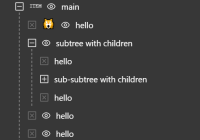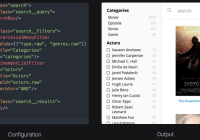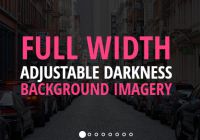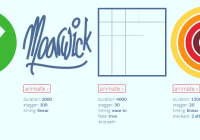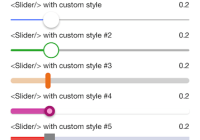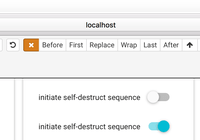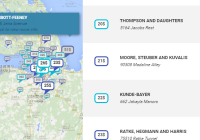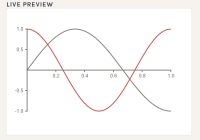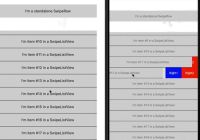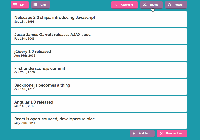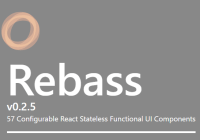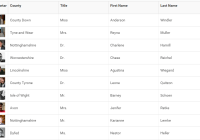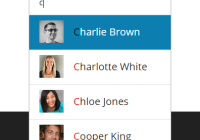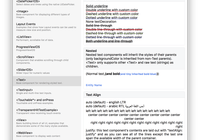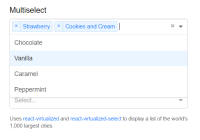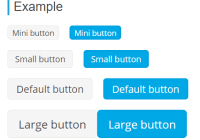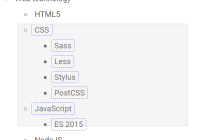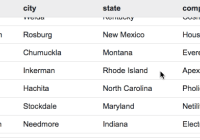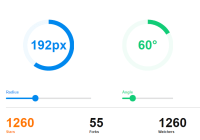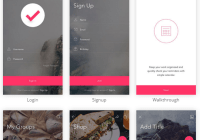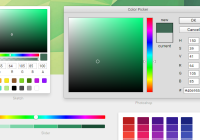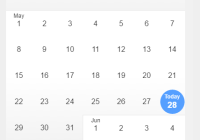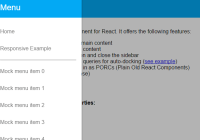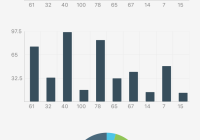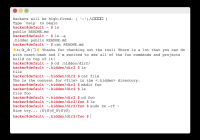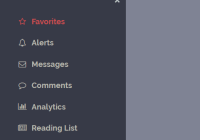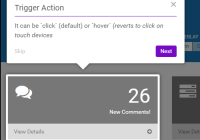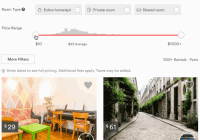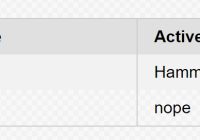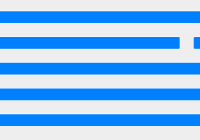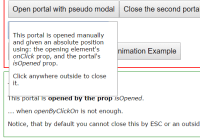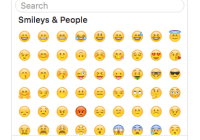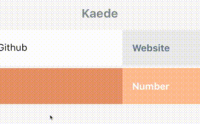React-Grid-Layout
React-Grid-Layout is a grid layout system much like Packery or Gridster, for React.
Unlike those systems, it is responsive and supports breakpoints. Breakpoint layouts can be provided by the user or autogenerated.
RGL is React-only and does not require jQuery.
GIF from production usage on BitMEX.com
[Demo | Changelog | CodeSandbox Editable demo]
Table of Contents
- Demos
- Features
- Installation
- Usage
- Responsive Usage
- Providing Grid Width
- Grid Layout Props
- Responsive Grid Layout Props
- Grid Item Props
- Contribute
- TODO List
Demos
- Showcase
- Basic
- No Dragging/Resizing (Layout Only)
- Messy Layout Autocorrect
- Layout Defined on Children
- Static Elements
- Adding/Removing Elements
- Saving Layout to LocalStorage
- Saving a Responsive Layout to LocalStorage
- Minimum and Maximum Width/Height
- Dynamic Minimum and Maximum Width/Height
- No Vertical Compacting (Free Movement)
- Prevent Collision
- Error Case
- Toolbox
Projects Using React-Grid-Layout
- BitMEX
- AWS CloudFront Dashboards
- Grafana
- Metabase
- HubSpot
- ComNetViz
- Stoplight
- Reflect
- ez-Dashing
- Kibana
- Graphext
Know of others? Create a PR to let me know!
Features
- 100% React - no jQuery
- Compatible with server-rendered apps
- Draggable widgets
- Resizable widgets
- Static widgets
- Configurable packing: horizontal, vertical, or off
- Bounds checking for dragging and resizing
- Widgets may be added or removed without rebuilding grid
- Layout can be serialized and restored
- Responsive breakpoints
- Separate layouts per responsive breakpoint
- Grid Items placed using CSS Transforms
- Performance: on / off, note paint (green) as % of time
| Version | Compatibility |
|---|---|
| >= 0.11.3 | React 0.14 & v15 |
| >= 0.10.0 | React 0.14 |
| 0.8. - 0.9.2 | React 0.13 |
| < 0.8 | React 0.12 |
Installation
Install the React-Grid-Layout package package using npm:
npm install react-grid-layoutInclude the following stylesheets in your application:
/node_modules/react-grid-layout/css/styles.css /node_modules/react-resizable/css/styles.css Usage
Use ReactGridLayout like any other component. The following example below will produce a grid with three items where:
- users will not be able to drag or resize item
a - item
bwill be restricted to a minimum width of 2 grid blocks and a maximum width of 4 grid blocks - users will be able to freely drag and resize item
c
import GridLayout from 'react-grid-layout'; class MyFirstGrid extends React.Component { render() { // layout is an array of objects, see the demo for more complete usage var layout = [ {i: 'a', x: 0, y: 0, w: 1, h: 2, static: true}, {i: 'b', x: 1, y: 0, w: 3, h: 2, minW: 2, maxW: 4}, {i: 'c', x: 4, y: 0, w: 1, h: 2} ]; return ( <GridLayout className="layout" layout={layout} cols={12} rowHeight={30} width={1200}> <div key="a">a</div> <div key="b">b</div> <div key="c">c</div> </GridLayout> ) } }You may also choose to set layout properties directly on the children:
import GridLayout from 'react-grid-layout'; class MyFirstGrid extends React.Component { render() { return ( <GridLayout className="layout" cols={12} rowHeight={30} width={1200}> <div key="a" data-grid={{x: 0, y: 0, w: 1, h: 2, static: true}}>a</div> <div key="b" data-grid={{x: 1, y: 0, w: 3, h: 2, minW: 2, maxW: 4}}>b</div> <div key="c" data-grid={{x: 4, y: 0, w: 1, h: 2}}>c</div> </GridLayout> ) } }Usage without Browserify/Webpack
A module usable in a <script> tag is included here. It uses a UMD shim and excludes React, so it must be otherwise available in your application, either via RequireJS or on window.React.
Responsive Usage
To make RGL responsive, use the <ResponsiveReactGridLayout> element:
import { Responsive as ResponsiveGridLayout } from 'react-grid-layout'; class MyResponsiveGrid extends React.Component { render() { // {lg: layout1, md: layout2, ...} var layouts = getLayoutsFromSomewhere(); return ( <ResponsiveGridLayout className="layout" layouts={layouts} breakpoints={{lg: 1200, md: 996, sm: 768, xs: 480, xxs: 0}} cols={{lg: 12, md: 10, sm: 6, xs: 4, xxs: 2}}> <div key="1">1</div> <div key="2">2</div> <div key="3">3</div> </ResponsiveGridLayout> ) } }When in responsive mode, you should supply at least one breakpoint via the layouts property.
When using layouts, it is best to supply as many breakpoints as possible, especially the largest one. If the largest is provided, RGL will attempt to interpolate the rest.
You will also need to provide a width, when using <ResponsiveReactGridLayout> it is suggested you use the HOC WidthProvider as per the instructions below.
For the time being, it is not possible to supply responsive mappings via the data-grid property on individual items, but that is coming soon.
Providing Grid Width
Both <ResponsiveReactGridLayout> and <ReactGridLayout> take width to calculate positions on drag events. In simple cases a HOC WidthProvider can be used to automatically determine width upon initialization and window resize events.
import { Responsive, WidthProvider } from 'react-grid-layout'; const ResponsiveGridLayout = WidthProvider(Responsive); class MyResponsiveGrid extends React.Component { render() { // {lg: layout1, md: layout2, ...} var layouts = getLayoutsFromSomewhere(); return ( <ResponsiveGridLayout className="layout" layouts={layouts} breakpoints={{lg: 1200, md: 996, sm: 768, xs: 480, xxs: 0}} cols={{lg: 12, md: 10, sm: 6, xs: 4, xxs: 2}}> <div key="1">1</div> <div key="2">2</div> <div key="3">3</div> </ResponsiveGridLayout> ) } }This allows you to easily replace WidthProvider with your own Provider HOC if you need more sophisticated logic.
WidthProvider accepts a single prop, measureBeforeMount. If true, WidthProvider will measure the container's width before mounting children. Use this if you'd like to completely eliminate any resizing animation on application/component mount.
Have a more complicated layout? WidthProvider is very simple and only listens to window 'resize' events. If you need more power and flexibility, try the SizeMe React HOC as an alternative to WidthProvider.
Grid Layout Props
RGL supports the following properties (see the source for the final word on this):
// // Basic props // // This allows setting the initial width on the server side. // This is required unless using the HOC <WidthProvider> or similar width: number, // If true, the container height swells and contracts to fit contents autoSize: ?boolean = true, // Number of columns in this layout. cols: ?number = 12, // A CSS selector for tags that will not be draggable. // For example: draggableCancel:'.MyNonDraggableAreaClassName' // If you forget the leading . it will not work. draggableCancel: ?string = '', // A CSS selector for tags that will act as the draggable handle. // For example: draggableHandle:'.MyDragHandleClassName' // If you forget the leading . it will not work. draggableHandle: ?string = '', // If true, the layout will compact vertically verticalCompact: ?boolean = true, // Compaction type. compactType: ?('vertical' | 'horizontal') = 'vertical'; // Layout is an array of object with the format: // {x: number, y: number, w: number, h: number} // The index into the layout must match the key used on each item component. // If you choose to use custom keys, you can specify that key in the layout // array objects like so: // {i: string, x: number, y: number, w: number, h: number} layout: ?array = null, // If not provided, use data-grid props on children // Margin between items [x, y] in px. margin: ?[number, number] = [10, 10], // Padding inside the container [x, y] in px containerPadding: ?[number, number] = margin, // Rows have a static height, but you can change this based on breakpoints // if you like. rowHeight: ?number = 150, // // Flags // isDraggable: ?boolean = true, isResizable: ?boolean = true, // Uses CSS3 translate() instead of position top/left. // This makes about 6x faster paint performance useCSSTransforms: ?boolean = true, // If true, grid items won't change position when being // dragged over. preventCollision: ?boolean = false; // // Callbacks // // Callback so you can save the layout. // Calls back with (currentLayout) after every drag or resize stop. onLayoutChange: (layout: Layout) => void, // // All callbacks below have signature (layout, oldItem, newItem, placeholder, e, element). // 'start' and 'stop' callbacks pass `undefined` for 'placeholder'. // type ItemCallback = (layout: Layout, oldItem: LayoutItem, newItem: LayoutItem, placeholder: LayoutItem, e: MouseEvent, element: HTMLElement) => void; // Calls when drag starts. onDragStart: ItemCallback, // Calls on each drag movement. onDrag: ItemCallback, // Calls when drag is complete. onDragStop: ItemCallback, // Calls when resize starts. onResizeStart: ItemCallback, // Calls when resize movement happens. onResize: ItemCallback, // Calls when resize is complete. onResizeStop: ItemCallbackResponsive Grid Layout Props
The responsive grid layout can be used instead. It supports all of the props above, excepting layout. The new properties and changes are:
// {name: pxVal}, e.g. {lg: 1200, md: 996, sm: 768, xs: 480} // Breakpoint names are arbitrary but must match in the cols and layouts objects. breakpoints: ?Object = {lg: 1200, md: 996, sm: 768, xs: 480, xxs: 0}, // # of cols. This is a breakpoint -> cols map, e.g. {lg: 12, md: 10, ...} cols: ?Object = {lg: 12, md: 10, sm: 6, xs: 4, xxs: 2}, // layouts is an object mapping breakpoints to layouts. // e.g. {lg: Layout, md: Layout, ...} layouts: {[key: $Keys<breakpoints>]: Layout} // // Callbacks // // Calls back with breakpoint and new # cols onBreakpointChange: (newBreakpoint: string, newCols: number) => void, // Callback so you can save the layout. // AllLayouts are keyed by breakpoint. onLayoutChange: (currentLayout: Layout, allLayouts: {[key: $Keys<breakpoints>]: Layout}) => void, // Callback when the width changes, so you can modify the layout as needed. onWidthChange: (containerWidth: number, margin: [number, number], cols: number, containerPadding: [number, number]) => void; Grid Item Props
RGL supports the following properties on grid items or layout items. When initializing a grid, build a layout array (as in the first example above), or attach this object as the data-grid property to each of your child elements (as in the second example).
Note that if a grid item is provided but incomplete (missing one of x, y, w, or h), an error will be thrown so you can correct your layout.
If no properties are provided for a grid item, one will be generated with a width and height of 1.
You can set minimums and maximums for each dimension. This is for resizing; it of course has no effect if resizing is disabled. Errors will be thrown if your mins and maxes overlap incorrectly, or your initial dimensions are out of range.
Any <GridItem> properties defined directly will take precedence over globally-set options. For example, if the layout has the property isDraggable: false, but the grid item has the prop isDraggable: true, the item will be draggable.
{ // A string corresponding to the component key i: string, // These are all in grid units, not pixels x: number, y: number, w: number, h: number, minW: ?number = 0, maxW: ?number = Infinity, minH: ?number = 0, maxH: ?number = Infinity, // If true, equal to `isDraggable: false, isResizable: false`. static: ?boolean = false, // If false, will not be draggable. Overrides `static`. isDraggable: ?boolean = true, // If false, will not be resizable. Overrides `static`. isResizable: ?boolean = true }Contribute
If you have a feature request, please add it as an issue or make a pull request.
If you have a bug to report, please reproduce the bug in CodeSandbox to help us easily isolate it.
TODO List
- Basic grid layout
- Fluid grid layout
- Grid packing
- Draggable grid items
- Live grid packing while dragging
- Resizable grid items
- Layouts per responsive breakpoint
- Define grid attributes on children themselves (
data-gridkey) - Static elements
- Persistent id per item for predictable localstorage restores, even when # items changes
- Min/max w/h per item
- Resizable handles on other corners
- Configurable w/h per breakpoint
